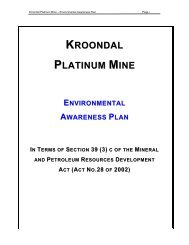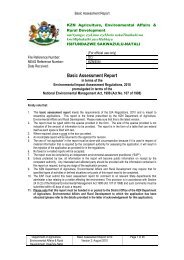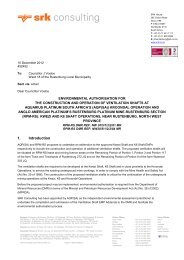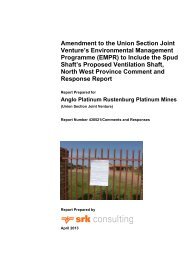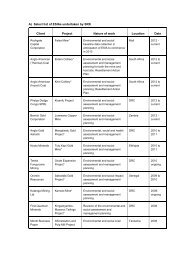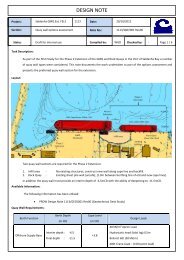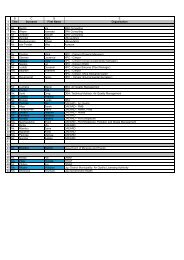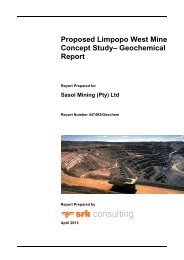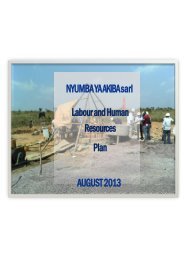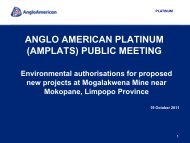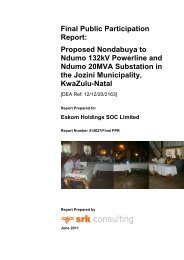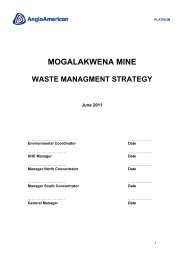Biodiversity (1 - SRK Consulting
Biodiversity (1 - SRK Consulting
Biodiversity (1 - SRK Consulting
You also want an ePaper? Increase the reach of your titles
YUMPU automatically turns print PDFs into web optimized ePapers that Google loves.
3. RATIONALE<br />
It is widely recognised that to conserve natural resources it is of the utmost<br />
importance to maintain ecological processes and life support systems for plants,<br />
animals and humans. To ensure that sustainable development takes place, it is<br />
therefore important that possible impacts on the environment are considered before<br />
relevant authorities approve any development. This led to legislation protecting the<br />
natural environment. In 1992, the Convention of Biological Diversity, a landmark<br />
convention, was signed by more than 90 % of all members of the United Nations. In<br />
South Africa, the Environmental Conservation Act (Act 73 of 1989), the National<br />
Environmental Management Act, 1998 (NEMA) (Act 107 of 1998) and the National<br />
Environmental Management <strong>Biodiversity</strong> Act, 2004 (Act 10 0f 2004) ensure the<br />
protection of ecological processes, natural systems and natural beauty, as well as<br />
the preservation of biotic diversity within the natural environment. They also ensure<br />
the protection of the environment against disturbance, deterioration, defacement or<br />
destruction as a result of man-made structures, installations, processes, products or<br />
activities. In support of these Acts, a draft list of Threatened Ecosystems was<br />
published (Government Gazette 2009), as part of the National Environmental<br />
Management <strong>Biodiversity</strong> Act, 2004 (Act 10 of 2004), and these Threatened<br />
Ecosystems are described by SANBI & DEAT (2009). International and national Red<br />
Data lists have also been produced for various plant and animal taxa.<br />
All components of the ecosystems (physical environment, vegetation, animals) at a<br />
site are interrelated and interdependent. A holistic approach is therefore imperative<br />
to include effectively the development, utilisation and, where necessary, conservation<br />
of the given natural resources into an integrated development plan, which will<br />
address all the needs of the modern human population (Bredenkamp & Brown 2001).<br />
It is therefore necessary to make a thorough inventory of the plant communities and<br />
other biodiversity on the site, in order to evaluate the biodiversity and possible rare<br />
species. This inventory should then serve as a scientific and ecological basis for the<br />
planning exercises and the subsequent development.<br />
SATO Aggeneys July 2011 21



